The Voices of the Past
The NEXUS chapters below explore the history of music and music in history from Ancient Greece to modern times. Each volume includes exercises and activities in which students learn to recognize and appreciate the musical styles of a period and to compose period music.
If we ignore these musical voices in history classes, students miss out on a large part of what the past has to say to us. NEXUS teaches students to recognize the distinctive musical voice of each era that our books cover and provides lessons and exercises in which students compose music in period styles. Why?
1) If a student can write a few bars in the style of the Ancient Greeks or the Renaissance or Jazz Age, she or he becomes a much better listener and appreciator of that music and more attuned to the voices of each era.
2) By composing period music students learn to recognize theme and variation patterns. NEXUS teaches and exercises pattern recognition as a vital cross-curriculum thinking skill – migration patterns in history, patterns of behavior in the sciences, repeated visual motifs in art, themes in literature.
In NEXUS, this skill, which is tested on IQ tests, is exercised in all subject areas making the student much more adept in applying it. Until now, students who learn pattern recognition typically do so by intuition – or osmosis.
Early Music Appreciation, Lessons and Activities 
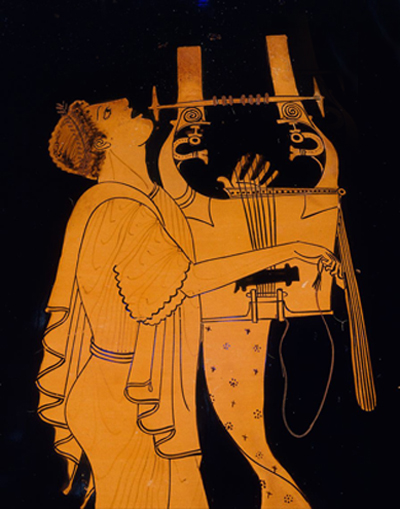
![]() Ancient Greek Music and Greek Drama
Ancient Greek Music and Greek Drama
“There are countless references to music in ancient Greek literature, and we know that large portions of the plays were sung. But what was the music like?”
Students examine the role of music and rhythm in Greek drama and dance; they are also introduced to ancient instruments and their uses. In the chapter lesson students transcribe ancient Greek music into modern musical notation. In the activity section they learn to construct a pan pipe in the style of the ancient Greeks, giving students the opportunity to experience and appreciate ancient music directly. [See “The Art of the Muses,” Antigone and the Greek World, NEXUS]
TEXT SAMPLE
“Fortunately, a number of examples of ancient Greek music have survived, mostly inscribed in stone or written on papyrus. In all, there are about 50 whole and fragmentary pieces of composition, preserving music written between about 500 BC and circa 300 BC. These include paeans (hymns), invocations, and dramatic pieces (including two fragments from a play by Euripides), as well as instrumental melodies and exercises.” [For more see “The Art of the Muses,” Antigone and the Greek World, NEXUS]
![]() Medieval Music Appreciation
Medieval Music Appreciation

![]() Renaissance Music Appreciation – Composers of Note
Renaissance Music Appreciation – Composers of Note
Appreciating Jazz and Other 20th-Century Music
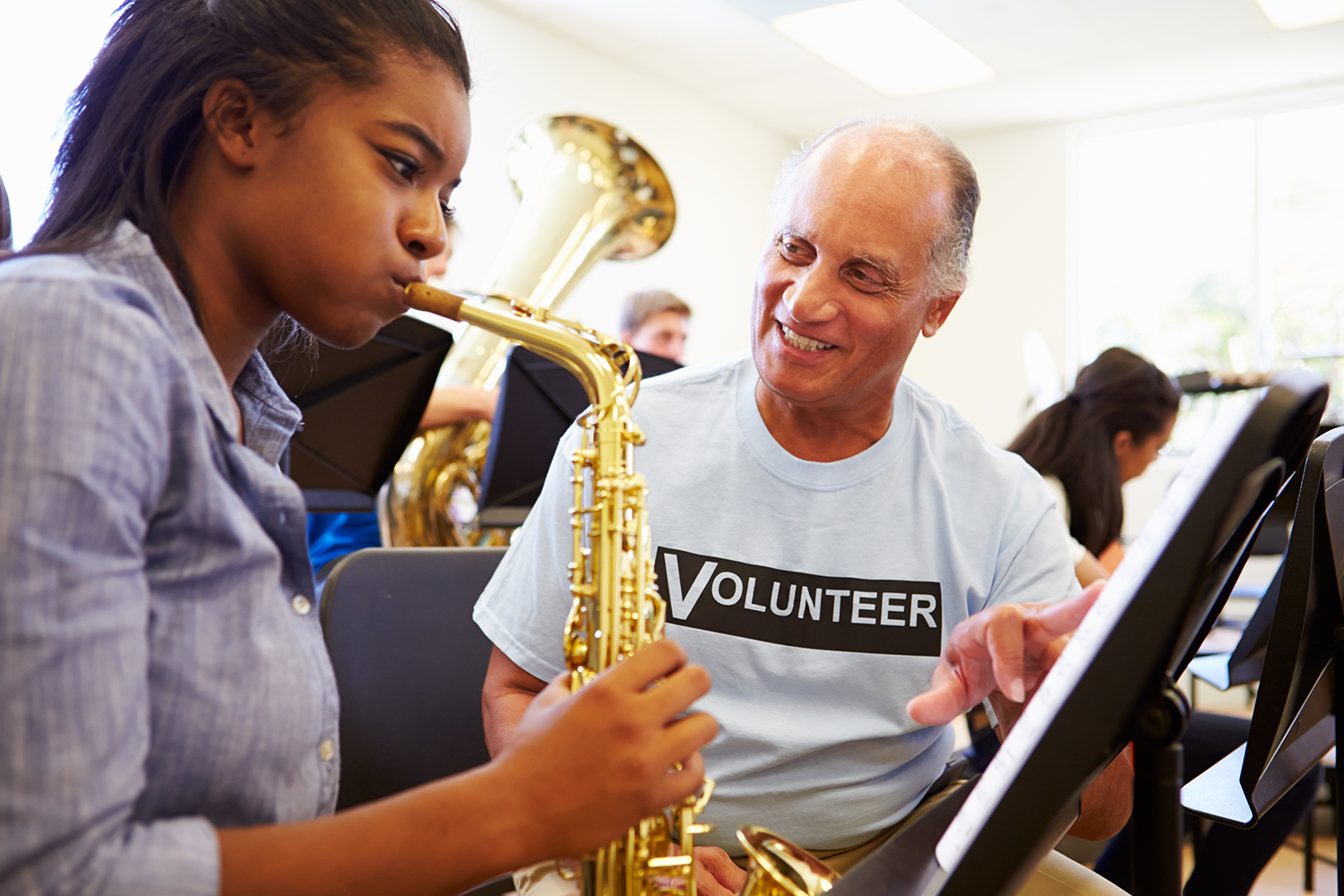
![]() Jazz and Blues Appreciation
Jazz and Blues Appreciation
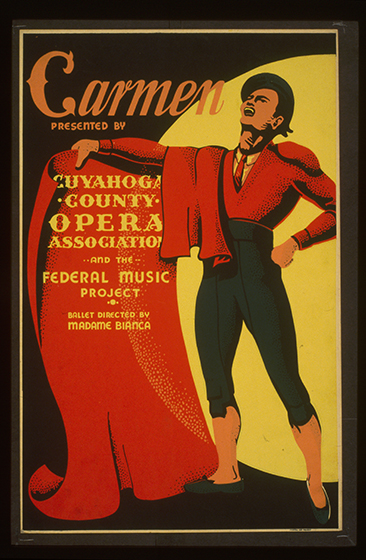
![]() The Federal Music Project of the WPA
The Federal Music Project of the WPA
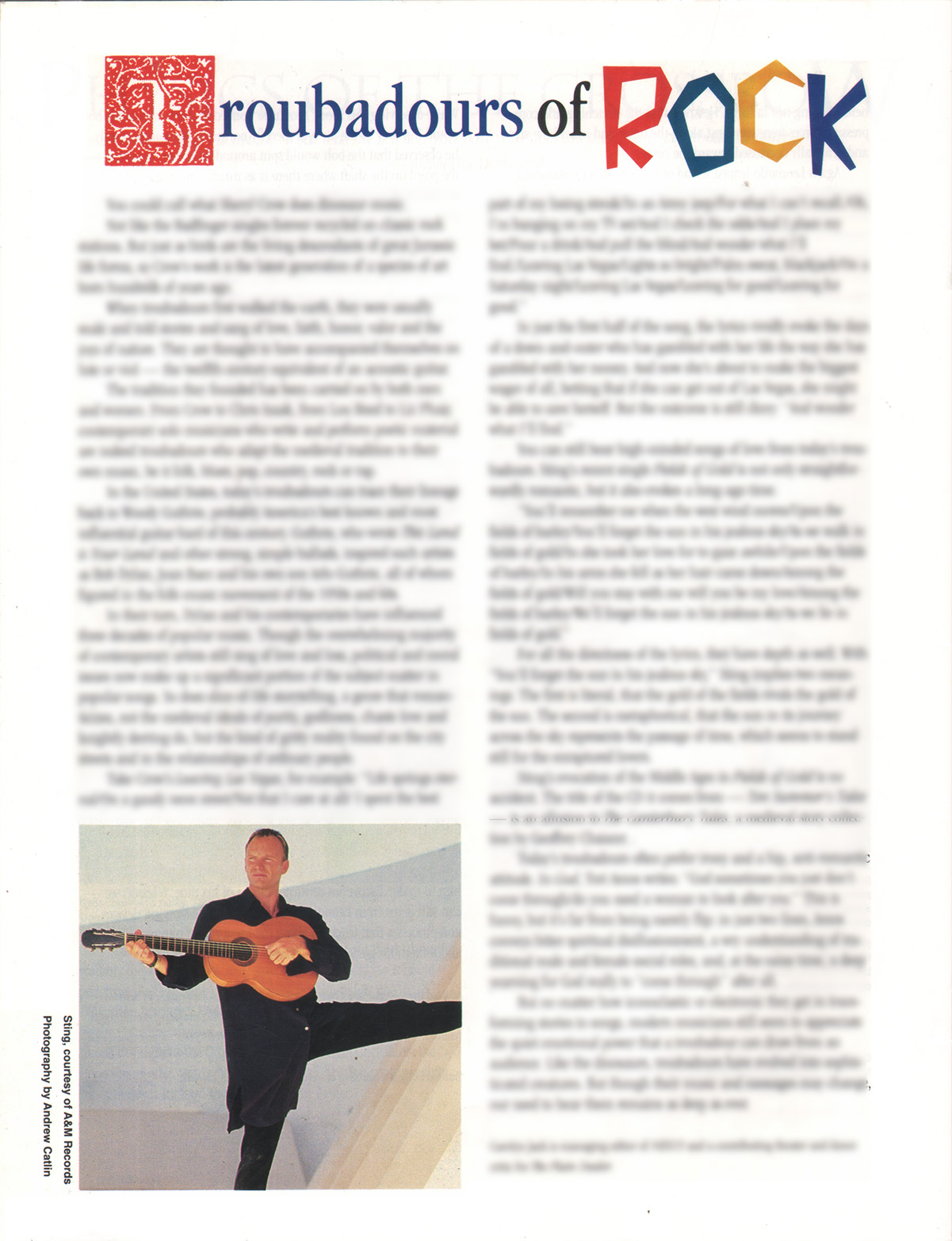
![]() Troubadours of Rock, Poetry in Song Lyrics, and Rock Music Appreciation
Troubadours of Rock, Poetry in Song Lyrics, and Rock Music Appreciation
We examine the trajectory of 20th-century troubadours from Woody Guthrie, Bob Dylan and Joan Baez to Sheryl Crow, Sting, and Tori Amos and help students interpret and better appreciate some of their potent and poetic lyrics.
“In the United States, today’s troubadours can trace their lineage back to Woody Guthrie [see ‘When the Land Blew Away,” The Grapes of Wrath and the American Dream, NEXUS], probably America’s best known and most influential guitar bard of this century. Guthrie, who wrote This Land is Your Land and other strong, simple ballads, inspired such artists as Bob Dylan, Joan Baez, and his own son Arlo Guthrie, all of whom figured in the folk-music movement of the 1950s and 60s.”
“In their turn, Dylan and his contemporaries have influenced five decades of popular music. Though the overwhelming majority of contemporary artists still sing of love and loss, political and moral issues now make up a significant portion of the subject matter in popular songs. So does slice-of-life storytelling, a genre that romanticizes not the medieval ideals of purity, godliness, chaste love and knightly derring-do, but the kind of gritty reality found on the city streets and in the relationships of ordinary people.”[for more see “Troubadours of Rock,” The Lion in Winter and the Middle Ages, NEXUS]
![]() Figures of Speech in Rap and Rock
Figures of Speech in Rap and Rock
Students learn to recognize and explicate figures of speech in rock and rap lyrics.
COMPOSING MUSIC 

Students learn to write period music from the Renaissance to the Jazz Age.
![]() – Writing Renaissance rounds
– Writing Renaissance rounds
Students deconstruct Renaissance canons and compose simple rounds and canons using theme and variation in Romeo and Juliet and the Renaissance.
![]() – Writing Improvised Counterpoint
– Writing Improvised Counterpoint
Jazz composer Paul Ferguson (contributing writer to Jazz Player magazine) instructs students to write improvised counterpoint: “When you improvise the bass voice, play only the roots, thirds and fifths of chords and the seventh of the dominant seventh chord. Occasional passing tones are also permissible….The trombone should be improvised in the same manner as the bass….Clarinet variations must also use the notes in the chords, but over a range of three octaves. Clarinet players usually employ many passing tones in improv….Improvising the trumpet part means playing variations of the melody. The listener should be able to recognize the melody in these variations….” [For more see “Jelly ‘n Jazz,” The Harlem Renaissance, NEXUS]
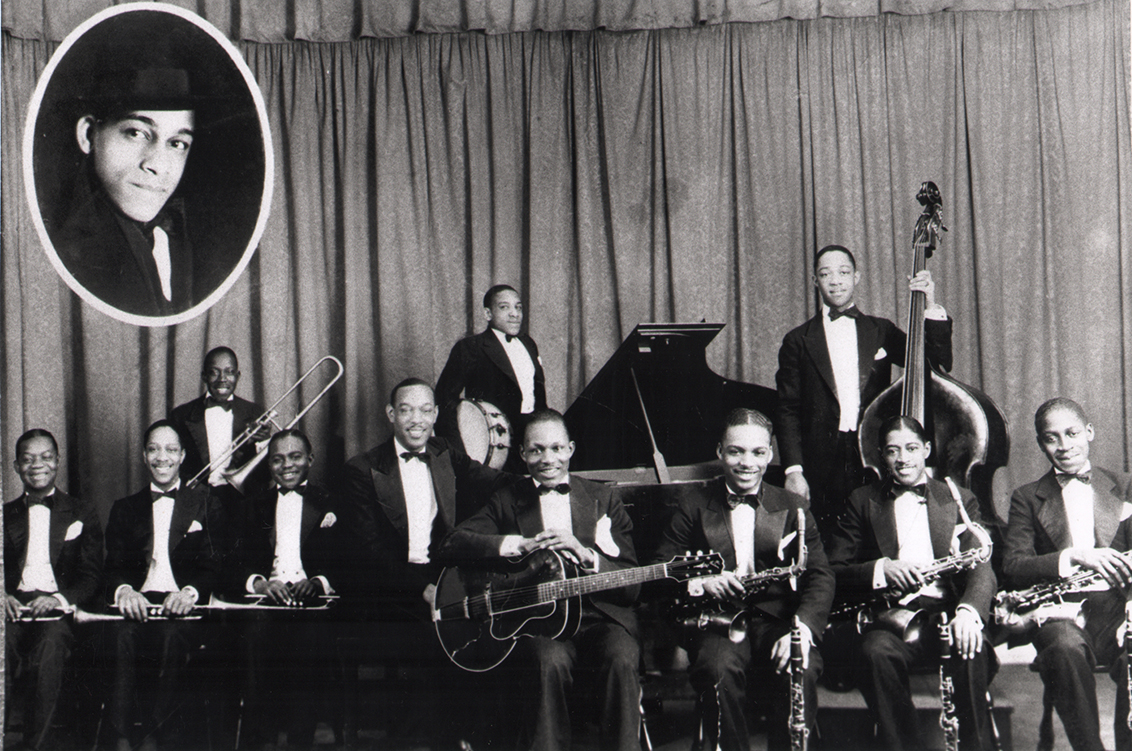
![]() Writing the blues and Langston Hughes’s blues poetry
Writing the blues and Langston Hughes’s blues poetry
Rise, Shine for Thy Light Has Come, Aaron Douglas
Modeling their projects on a Langston Hughes-Aaron Douglas collaboration, students learn to write and illustrate a blues poem using an AAB format and contrast and irony. They also learn to compose a blues progression and melody employing theme and variation [For more see “How to Write a Blues Poem” and “Structure of the Blues,” in the SUPPLEMENTS menu under The Harlem Renaissance.]
![]() Recognizing and Replicating Swing Music Composition
Recognizing and Replicating Swing Music Composition
Paul Ferguson teaches students the ABCs of writing Swing Music: “Swing has a more laid back phrasing than any music heard before. It tended to have a swinging triplet-based feel (three beats instead of two for every count). The articulation was more legato (smooth and flowing), with notes more often connected (slurred) to each other than separate. One of the best ways to hear this is to compare the two recordings of…” [For more see “The Depression’s Upbeat – Swing,” The Grapes of Wrath and the American Dream, NEXUS]. "The big bands of Swing followed predictable formulas in creating repertoire (song lists): the music had to be danceable, singable and memorable….Most of the tunes follow an AABA, 32 measure pattern. This was the formula for most popular songs. Each section in swing is…”
Music Appreciation in Literature
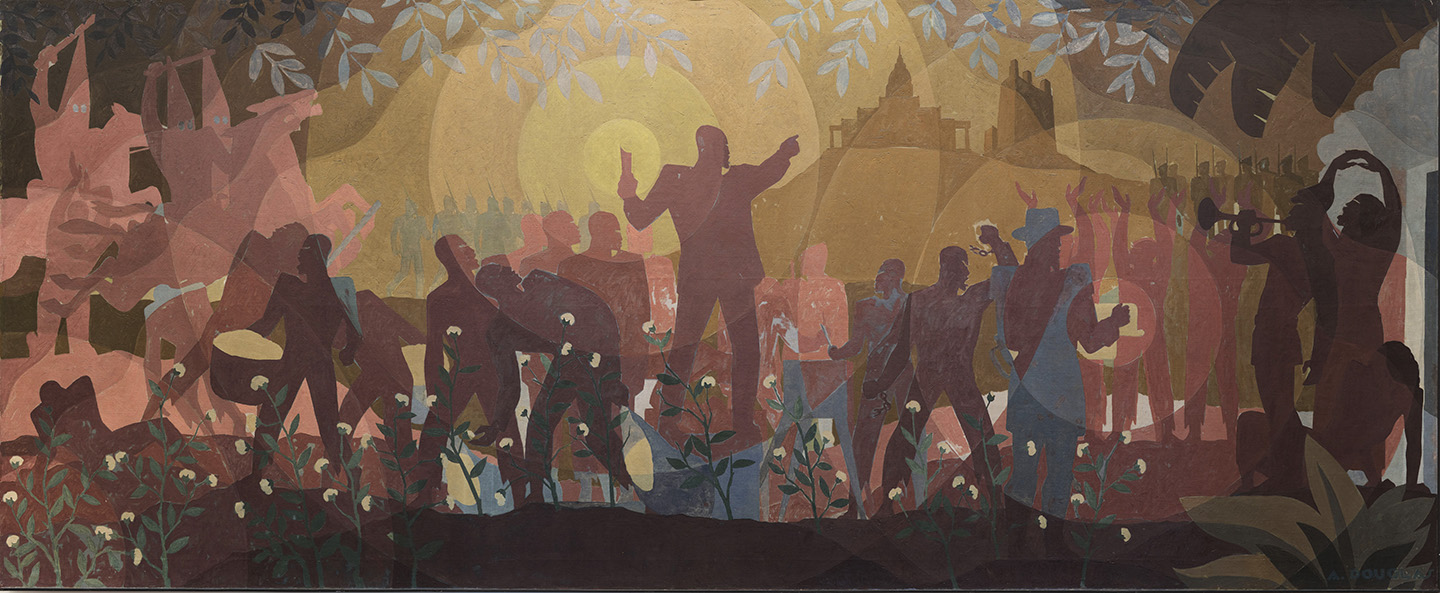
In the music sections of three of the NEXUS volumes, we examine theme and variation in period music, including imitative counterpoint in “Sounds and Rounds of the Renaissance” (Romeo and Juliet and the Renaissance), New Orleans polyphony (jazz counterpoint and improvisation) in “Jelly ‘n Jazz” (The Harlem Renaissance), and AABA patterns in Swing music in “The Depression’s Upbeat” (The Grapes of Wrath and the American Dream). In all these volumes, students learn to listen for repeated and varied musical patterns, and they learn enough music theory to write their own musical compositions in the period styles. In The Grapes of Wrath and the American Dream supplement, “Repetition in Music and Literature,” students compare the use of repetition in two pieces of well-known classical music to the musical use of repetition and variation in the global chapters of John Steinbeck’s The Grapes of Wrath and other literature.

